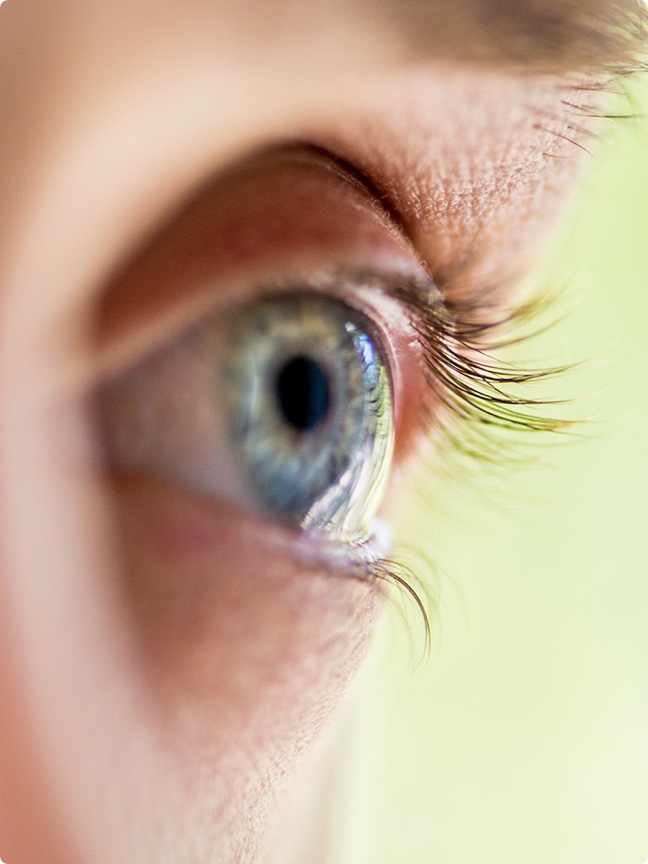

Every day we lose about 300–400 mL of water through the skin.1
Every day we lose water through our skin through a passive continuous process called Transepidermal Water Loss (TEWL) in which water evaporates from the skin to the external environment.1 The compromise of the moisture barrier, that can be caused by environmental stressors (pollutants, UV rays, dry climate), psychological stress, aging, some underlying skin conditions and harmful skincare practices can increase the TEWL leaving our skin dehydrated. Some signs of dehydrated skin could be fine lines, dull complexion, dryness, acne and clogged pores as well as increased sensitivity. Dehydrated skin is not a skin type but a skin condition which means that it can be fixed with lifestyle changes and topical skincare.
1 Source: Applied Dermatotoxicology, 2014
Skin aging
Skin aging consists of changes that happen with time in the three layers of skin: the epidermis, the dermis and the hypodermis. These changes differ from one person to another as they are related to sun exposure, lifestyle habits, genetics and other environmental factors. One of the changes that we see with age is the thinning of the skin. As the amount of components of the dermis like collagen, Hyaluronic Acid and elastin declines, the skin loses its elasticity and its plumpness. Simultaneously, fine lines and wrinkles start to appear, especially in the more dynamic parts of the face (around the eyes, around the lips, on the forehead). Furthermore, uneven pigmentation is seen due to changes regarding the melanocytes.1 Lifestyle and skincare practices can slow down these changes, allowing a more graceful aging.
1Farage, Miranda A et al. “Characteristics of the Aging Skin.” Advances in wound care vol. 2,1 (2013)
Acne is estimated to be the 8th most prevalent disease worldwide.1
Acne is a skin condition that occurs when your hair follicles become plugged with oil and dead skin cells. It causes whiteheads, blackheads or pimples in the form of papules, pustules, nodules and cystic lesions and can also cause scarring, erythemas and hyperpigmentation of the skin. Acne is most common among teenagers as it is linked with the increased production of sebum at that age, though it affects people of all ages.2 High sebum levels favour the growth of Propionibacterium acnes, a species of bacterium typically associated with more severe inflammatory acne. Depending on its severity, acne can cause emotional distress, as it can affect the social life, self-esteem and body image of individuals and is often co-morbid with psychological disorders including depression and anxiety.3
1 Tan JK, Bhate K. A global perspective on the epidemiology of acne. Br J Dermatol. 2015
2 Mayo Clinic. 2021. Acne – Symptoms and causes. [online]
3 Heng, A.H.S., Chew, F.T. Systematic review of the epidemiology of acne vulgaris. Sci Rep 10, 5754 (2020).
Incidence rates of hypertrophic scarring vary from 40% to 70% following surgery to up to 91% following burn injury.1
Hypertrophic scarring represents an undesirable variant in the wound healing process that usually develops 1 to 2 months after the skin injury. In hypertrophic scars, excess connective tissue is deposited in the area of the original wound creating a thickened raised tissue that looks pink to red. They often develop on areas of the body that undergo the most skin tension. They may cause itching and sometimes be painful. Burn wounds are prone to hypertrophic scarring, especially if they affect the deeper dermis (second and third-degree burns). Regarding its epidemiology, adolescents and pregnant women may be more likely to form hypertrophic scars as well as people with darker skin complexions (15% more likely).2 Treatments include medication, freezing, injections, lasers and surgery.3
1Gauglitz, Gerd G et al. “Hypertrophic scarring and keloids: pathomechanisms and current and emerging treatment strategies.” Molecular medicine (2011)
2 Schmieder SJ, Ferrer-Bruker SJ. Hypertrophic Scarring. StatPearls 2021
3 Cleveland Clinic.
Our Brands

WANT TO KNOW MORE?
Discover the website dedicated to Aesthetic Care.




